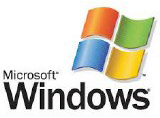Introduction
Satellite internet has revolutionized global connectivity, providing access to remote areas where traditional broadband infrastructure is unavailable. With T-Mobile's Starlink-powered service entering the market alongside AT&T and Verizon's offerings, consumers now have more choices than ever. This article explores these services, their enrollment processes, supported devices, the history of satellite internet, how satellites are positioned in space, their costs, lifespan, recycling, and the future of satellite connectivity.

T-Mobile Starlink Service
T-Mobile has partnered with SpaceX’s Starlink to offer satellite-powered messaging services. Currently in beta, the service is free for all users until July. Afterward, it will remain free for customers on T-Mobile’s premium plans, while others, including AT&T and Verizon users, will need to pay a monthly fee. The service aims to connect areas without traditional cell coverage by using satellites as orbiting cell towers. Initially, only texting is supported, but voice and data capabilities are expected to be added later.
Enrollment and Supported Devices
Anyone with a compatible device can sign up for the beta trial. The service is expected to be included in T-Mobile’s Go5G Next plan, while other T-Mobile customers will need to pay an additional $15 per month. AT&T and Verizon users can access the service for $20 per month unless they switch to T-Mobile.
Some of the Compatible Devices for Satellite Internet Service
- Starlink
- Starlink Gen 2 Wi-Fi Router
- Starlink Gen 3 Wi-Fi Router
- Starlink Mesh Nodes (up to 3 supported)
- HughesNet
- HT2000W Modem-Wi-Fi Router Combo
- Dual-band 802.11ac Router
- Viasat
- Viasat WiFi Gateway
- Dual-band 802.11ac Router
- T-Mobile Starlink Cellular Service
- Apple iPhone 14 and newer
- Samsung Galaxy S21 and newer
- Google Pixel 9 series
- Motorola Razr and Edge (2024 models)
AT&T and Verizon Satellite Offerings
AT&T and Verizon have also entered the satellite internet space, offering services that complement their existing cellular networks. While they do not have direct partnerships with Starlink, they provide satellite-based emergency connectivity and rural broadband solutions.
History of Satellite Internet
Satellite internet traces its origins back to the launch of the first communication satellites in the 1960s. The concept of geostationary satellites was popularized by Arthur C. Clarke in 1945, leading to the development of commercial satellite networks. Early satellite internet services were slow and expensive, but advancements in low-Earth orbit (LEO) satellites have significantly improved speed and latency.
How Satellites Are Positioned in Space
Satellites are launched into orbit using rockets. They achieve their designated orbit by reaching a specific velocity that balances gravitational pull and centrifugal force. There are different types of orbits, including geostationary orbit (GEO), medium Earth orbit (MEO), and low Earth orbit (LEO), each serving different purposes.
Satellite Costs and Lifespan
The cost of launching a satellite varies widely based on size and function. Traditional GEO satellites can cost hundreds of millions of dollars, while smaller LEO satellites are more affordable, often ranging from $1,500 to $2,500 per kilogram. Most satellites are designed to last 10 to 15 years, though many exceed their expected lifespan.
Do Satellites Get Recycled?
Satellites are not typically recycled in the traditional sense. Some are deorbited and burned up in Earth’s atmosphere, while others are moved to a "graveyard orbit" to prevent space debris accumulation. Efforts are underway to develop satellite servicing missions that could extend their lifespan or repurpose components.
The Future of Satellite Internet
The future of satellite internet is promising, with advancements in LEO satellite constellations reducing latency and improving global coverage. Companies like SpaceX, OneWeb, and Amazon’s Project Kuiper are deploying vast networks to provide high-speed, low-latency internet worldwide. Innovations such as inter-satellite communication and quantum encryption are expected to enhance security and efficiency.
Other Satellite Internet Providers
- HughesNet: Reliable speeds with affordable pricing.
- Viasat: Offers higher speeds and flexible plans.
- OneWeb: Focuses on enterprise and government connectivity.
- Amazon’s Project Kuiper: Expected to launch soon, providing competition to Starlink.
Conclusion
Satellite internet is rapidly evolving, offering new opportunities for connectivity in remote areas. With T-Mobile’s Starlink service, AT&T and Verizon’s satellite-based solutions, and emerging providers, consumers have more choices than ever. As technology advances, satellite internet will be crucial in bridging the digital divide.




















